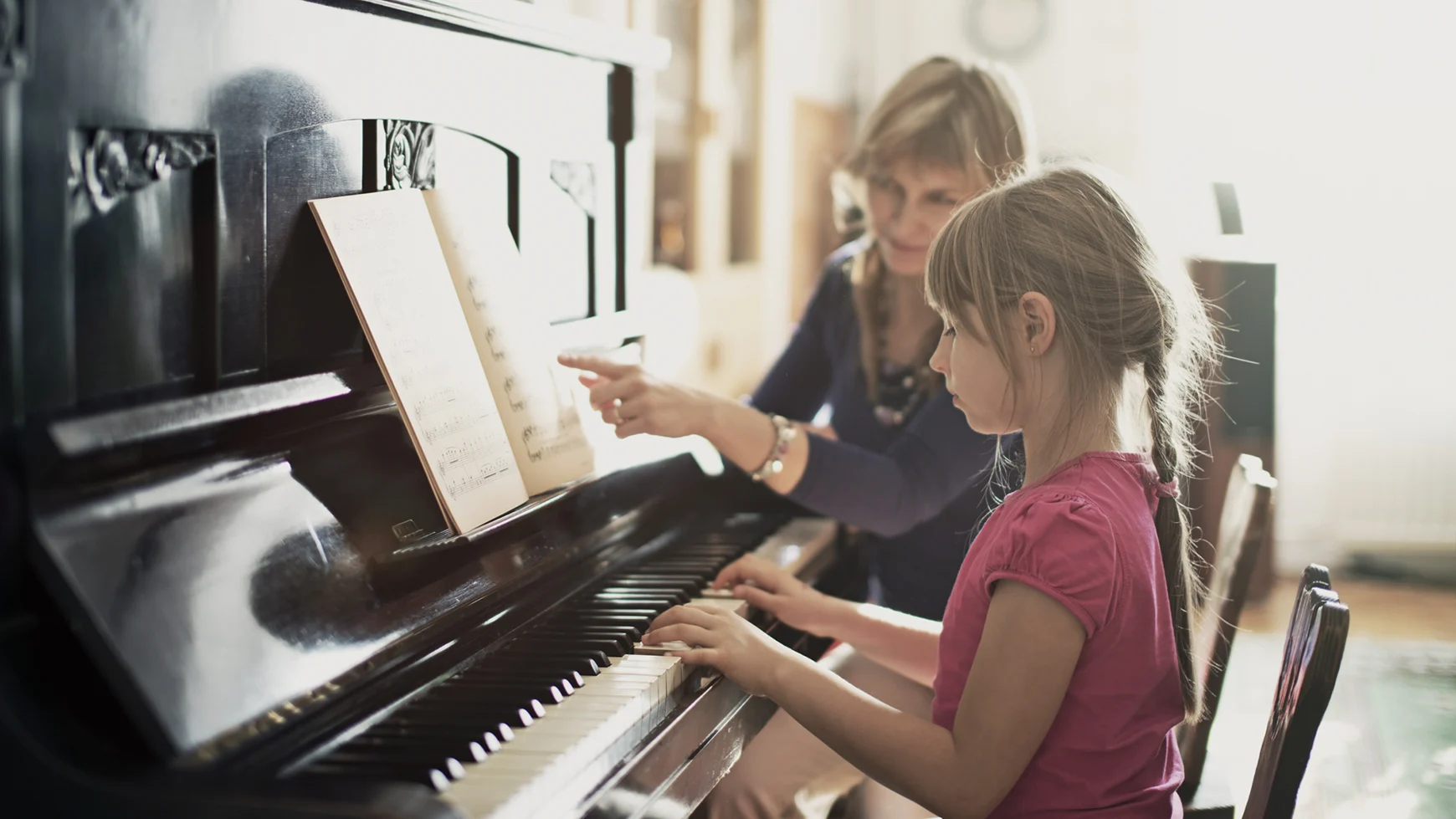FAQs about dyslexia and learning music

At a glance
For some kids with dyslexia, reading music may be easier than reading text.
Kids who struggle not only with reading words but also with understanding how symbols work might find reading music difficult.
There are many strategies that can help kids overcome obstacles and enjoy music in their own special way.
If you have a child with dyslexia, you may wonder whether it will affect the ability to read music or play an instrument. The answer? It depends.
Trouble with reading words can also impact a child’s ability to read, , and interpret music. That doesn’t mean kids with dyslexia can’t learn to play music and enjoy doing it, though. The brain systems involved with dyslexia are complicated, and they vary from child to child.
Plus, music isn’t written the same way for all instruments. There’s a big difference between reading drumming, piano, and guitar notation. While your child might have difficulty reading piano music, drum notation might feel quite natural. The only way to know is to try.
Here are some answers to common questions about dyslexia and music.
How does learning music happen in the brain?
Reading words and engaging with music share some of the same brain networks. But for the most part, they happen in different areas of the brain.
For example, the temporal lobe is responsible for phonological awareness and decoding. Listening to music involves the auditory cortices. Matching the beat of music involves the frontal lobes, subcortical structures, and the cerebellum.
Brain function isn’t the only thing that impacts a child’s ability to learn music, however. How a child engages with music can also have an impact.
Learning music doesn’t need to begin with reading it. In fact, it’s often better to start with just listening to music, playing it, and moving musically. Programs like Meludia.com, Let’s Play Music, and School of Rock are places to begin experiencing musical pitch, melody, rhythm, and tempo.
Why might kids with dyslexia struggle with reading music?
The research on this isn’t clear. Some studies suggest the same issues that make reading difficult also make learning to read musical notation hard.
Kids with dyslexia have trouble isolating sounds in words and then mapping them back to letters. This weakness may also impact their ability to process sounds in music. They may have trouble perceiving rhythm and pitch, which can make it hard to make sense of sheet music.
Just as kids with dyslexia don’t all struggle with reading in the same way, they don’t all struggle with music in the same way. There are some common challenges, however. These include:
Learning a new vocabulary in which familiar words have a different meaning. These words include note, key, bar, sharp, and flat.
Visual tracking from left to right, and top to bottom.
Rhythm and timing.
Decoding music symbols. Kids may have trouble noticing details like whether the “tail” of the notes goes up or down, for instance. They may also not understand the symbols for sharps and flats or rhythm notation.
Holding musical information in working memory.
Coordinating use of their hands and feet as they play their instrument.
Can music training improve a child’s reading skills?
There’s some research that suggests musical training may have a positive impact on reading skills. Learning music can be a fun, more relaxed way of listening to, and producing, changes in sound. Research suggests that it may also improve a child’s ability to process speech sounds.
One study found that learning to recognize sound patterns and map them to symbols helped build reading skills. It seemed to improve phonemic awareness.
Also, singing may help kids segment words into syllables. For example, when kids sing “Row, row, row your boat gently down the stream,” the word gently is exaggerated. Drawing out the word to music may make it easier to hear its segments.
Are there strategies that can help kids with dyslexia learn to read music?
Just like they help kids learn to read words, multisensory techniques can help them learn to read music. In fact, music teachers often use these techniques for all beginning students.
Here are a few common strategies.
Tracing the melody with a finger on the score, then drawing it in the air and on paper.
Raising and lowering hands or jumping up and down in response to changes in pitch.
Walking, marching, or clapping to different rhythms to raise awareness of the beat.
Writing notes in different colors on sheet music to make them stand out.
Reducing clutter on sheet music by only showing the line of music the child is working on.
There are many more multisensory techniques that can help kids learn music. Ask potential music teachers (or the music teacher at school) if they use these types of strategies.
Should kids with dyslexia avoid learning an instrument or joining the school band?
Research suggests that musical experience has a positive impact on thinking and learning skills. But if your child’s not really interested in music or in playing an instrument, it may not be worth pushing it. Your child may already be facing enough challenges with reading.
If your child is really motivated, however, offer encouragement! Many kids with dyslexia are successful at learning music. If your child wants to give it a try, playing music can bring a lot of joy — and a feeling of accomplishment.
Find out more about multisensory instruction. And learn about famous musicians with dyslexia and other learning and thinking differences.
Key takeaways
Multisensory techniques can help kids recognize rhythms and make sense of musical notation.
Many teachers will already be using some of these techniques because they benefit all beginners.
The practice kids get distinguishing sounds and rhythms may improve reading skills.


